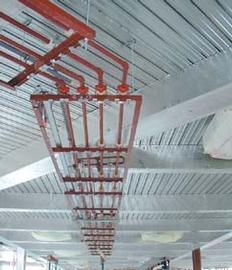Increased capital cost is perceived as the main drawback. Many of those at the Offsite event however felt that reducing the issue to capital cost alone didn't represent the true value that osm has to offer. Bill Wright, manager for engineering design at Waitrose and John Lewis Partnership, says it has been trialing services prefabrication on a number of projects. "Costs are often more," says Wright. "But if you reduce the programme by one week additional costs can be made back with the extra profit that's generated." One of the areas the company began experimenting with in the early 90s was prefabricated lift installations. Initially the speed of installation outweighed the increase in capital cost, typically by around 10%, but similar installations across six stores have enabled costs to be brought in line with conventional installations.
David Butler, principal consultant at BRE, drew a number of comparisons between conventional and prefabricated approaches. Comparing figures from a recent BSj cost model (November 2001) showed packaged rooftop plantrooms to be more expensive than a conventional approach, but provided reduced programmes and better quality. However, similar comparisons for pre-assembled boiler systems and multi-service prefabricated four pipe fan coil systems were both cheaper and quicker to install.
Product improvement and greater design integration have proved one of the keys to success. Amec has been developing large multi-service distribution modules for use on a number of projects, as well as using modularised risers and plant rooms designed to be stacked up to six high. Integrating significant structural elements into the m&e package has cost implications, but says Adams: "The cost of the steelwork support and additional structure of the plantrooms is fairly insignificant compared to the quicker on-site time."
Amec's process of standardising components and methods across several projects on a significant scale and linking this to a continuous improvement cycle has also delivered benefits. Working with suppliers to develop improved framework solutions for example has enabled the weight of the multi service distribution modules, which measure 6 m x 2·3 m x 2·5 m and weigh up to 4·3 tonnes, to be reduced by around 30%.
Bailey also highlighted the need to focus on products rather than projects and avoid the mentality of unique design by establishing consistency of specification for repeatable elements such as plantrooms and risers.
According to Adams, 3D modelling has been a breakthrough area which is regularly employed by the firm as a training tool. It allows contractors to visualise the completed installation providing greater understanding of how the units should be assembled. Amec has also developed a web-based tool which can be shared by the whole construction team. Each module is allocated its own web page which gives a walk-through of the virtual product along with specification, drawings, programme details, manufacturers literature and information on transportation.
All the speakers agreed that for osm to be truly successful it must be client driven and that buy-in from all parties involved was essential. "Prefabrication and pre-assembly must be considered very early on and co-ordination with other professionals is essential," says Butler. The selection of tender proposals should include programme, design and installation quality criteria. Bailey also recommends streamlining the design process, replacing the traditional consultant, contractor, value engineering and prefabrication design route with a single process that combines all four, before freezing the design and allowing it to be built. That way efficiency can be maximised.
Source
ÐÇ¿Õ´«Ã½ Sustainable Design
Postscript
For more information on the presentations at Offsite 03 visit: www.offsite03.co.uk


















No comments yet